Dec 30, 2025
Dec 30, 2025
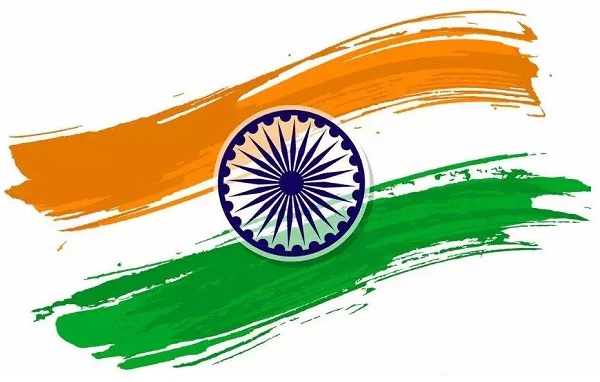 India is celebrating the 75th year of Independence from the British colonizers as the year of the Azadi Ka Amrit Mahotsava (AKAM) for a yearlong ceremonial treat. The most important feature of these celebrations is to rediscover and recognize the contribution of numerous unsung heroes of the freedom struggle lost in oblivion despite their sacrifices and valuable services rendered for the cause of the nation. After independence on 15 August 1947, the baton was passed on to the Indian National Congress (INC), also known as the Congress Party or just the Congress, by the British rulers after the partition of the country, which became the new political masters of the country under the leadership of Jawaharlal Nehru. As an unquestioned leader within the ruling Congress, he tried to shape the political and socio-economic destiny of the nation as per his vision and ability for nearly two decades; in the process, the loyal leaders who agreed or compromised with his vision, policies and programmes stayed and prospered as part of the mainstream Congress while others who disagreed had to leave and pursue own chosen path or simply fizzled in oblivion in the post-independence history.
India is celebrating the 75th year of Independence from the British colonizers as the year of the Azadi Ka Amrit Mahotsava (AKAM) for a yearlong ceremonial treat. The most important feature of these celebrations is to rediscover and recognize the contribution of numerous unsung heroes of the freedom struggle lost in oblivion despite their sacrifices and valuable services rendered for the cause of the nation. After independence on 15 August 1947, the baton was passed on to the Indian National Congress (INC), also known as the Congress Party or just the Congress, by the British rulers after the partition of the country, which became the new political masters of the country under the leadership of Jawaharlal Nehru. As an unquestioned leader within the ruling Congress, he tried to shape the political and socio-economic destiny of the nation as per his vision and ability for nearly two decades; in the process, the loyal leaders who agreed or compromised with his vision, policies and programmes stayed and prospered as part of the mainstream Congress while others who disagreed had to leave and pursue own chosen path or simply fizzled in oblivion in the post-independence history.
Also, the loyalist Congressmen in the party constantly supported the dynastic rule by Nehru-Gandhi family in the following years. Consequently, over the decades the Congress has become a synonym of this family and the contributions of the most other nationalist leaders and stalwarts of the long freedom struggle such as Sardar Vallabhbhai Patel or Netaji Subhash Chandra Bose was conveniently forgotten.
To illustrate this point, one can easily find several hundred institutions, programmes, trophies, awards, roads and installations to commemorate the pre- and post-independence contributions the family members of Nehru-Gandhi clan in the country but even one memorial created by the present ruling dispensation at the Centre in the name of Sardar Patel has been criticized by the present Congress leaders as the wastage of public money. For instance, more recently a loyalist Congress leader Shashi Tharoor stated that the right-wing Hindus are leading a political campaign over Indian history that seeks to reinvent the idea of India itself and that for seven decades, the Indianness rested on the faith in the country’s pluralism but now the “Hindu nationalism” is being escalated with a sense of cultural superiority.
We have often experienced objections to the use of the term (Indian) “nationalism” owing to objections and aversion of one minority community; for instance, Hamid Ansari, Vice-President of India for two full terms, is well known for not bowing or saluting the Indian national flag or reciting the national anthem. However, now branding it as “Hindu nationalism” has added a new dimension to it. Of late this debate has become even more intense with leaders of the freedom struggle like Netaji Subhash being recognized and honoured on his 125th birth anniversary at the national level and the Congress choosing to keep a distance with it. This is indeed a sad saga that the party claiming the legacy of the erstwhile INC finds faults with nearly every effort of the government to recognize the forgotten heroes while some others are resorting to another extreme of refusing to acknowledge the contribution of the Indian National Congress in the freedom movement. In this author’s opinion, either of the approaches are not without faults; hence he proposes to briefly analyse here the circumstances and events leading to the independence of the nation as also the contribution of various organizations and people.
The Indian National Congress
Of course, much has already been written and popularized about the Congress story in the post-independence history; hence more of it is apparently not required a re-telling and it would be sufficed to just briefly recapture the major highlights of the party’s role and contributions during the freedom struggle.
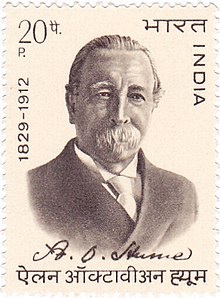 The Indian National Congress was constituted largely due to the efforts of a retired British Civil Service officer, Allan Octavian Hume in 1885, and its first session was conducted in Bombay from 28 to 31 December 1885. Its aim was to create an organized platform and forum of educated and loyalist Indians to serve as an effective communication channel between the British government and Indian people as also to give enhanced share to such Indians in the civic and political governance of the British Raj.
The Indian National Congress was constituted largely due to the efforts of a retired British Civil Service officer, Allan Octavian Hume in 1885, and its first session was conducted in Bombay from 28 to 31 December 1885. Its aim was to create an organized platform and forum of educated and loyalist Indians to serve as an effective communication channel between the British government and Indian people as also to give enhanced share to such Indians in the civic and political governance of the British Raj.
The early leaders of this forum or party were the stalwarts like Dadabhai Naoroji, Umesh Chandra Banerjee, Gopal Krishna Gokhale, Bal Gangadhar Tilak (aka Bal), Bipin Chandra Pal (aka Pal), Lala Lajpat Rai (aka Lal), and so on.
In the initial years, many leaders of Gokhale ilk (MA Jinnah too joined around 1904) were considered moderate while the last three jointly known as the “Lal Bal Pal” triumvirate or trio were strong proponents of Swaraj, with Tilak often regarded as "The father of the Indian unrest” by the British colonial authorities. After serving as a prominent civil rights activist in South Africa for over two decades, Mohandas Karamchand Gandhi returned to India in 1915, at the request of the moderate Indian nationalist leaders. In the next 5-6 years, Gandhi consolidated his position in the INC with augmented political role and activities, supported the call of British for the Indian conscription to the British army during the 1st world war, forged alliance with the Indian Muslim League to actively participate in the Khilafat Movement in 1920s for the preservation of the Ottoman Caliphate and effectively assumed the leadership of the Congress by the year 1921. By this time, the leaders like Lal, Bal and Pal trio with radical ideas were effectively removed or side-lined; Bal died in 1920, Lal died after sustaining severe injuries while leading a peaceful protest against the Simon Commission in 1928 and Pal parted with the Congress to live a secluded life towards the end of life.
Some important and landmark events in the freedom movement involving INC are the call for swadeshi goods in 1905 against the partition of Bengal, following which the partition was annulled in 1911, The Champaran Satyagraha of 1917 (1st such movement led by Gandhiji), Hartal, Fasting and Prayer in protest of the Rowlett Act, and Jallianwalah Bagh massacre in 1919, Khilafat movement in 1919-20 joined by Congress on Gandhi’s behest, Civil Disobedience movement in 1921, Bardoli Protests in 1928, Purna Swaraj (Complete Independence) Declaration by the Indian National Congress on 26 January 1930, Dandi March (Namak Satyagrah) in 1931, Quit India Movement launched in 1942, British announced in February 1947 full self-government in India by 1948, announcement of partition in June 1947, and formation of India and Pakistan and transfer of power to Congress by British in August 1947. In all the above cases, the Congress under Gandhi acted with rather a firm determination on 8 August 1942 giving a call “Do or Die” with the Quit India Movement, but it was mercilessly crushed by the British government. The failure of the movement is ascribed to the lack of clear vision and programme of action, weak coordination, and heavy-handed suppression by the British rulers.
The 1930s and afterwards, Mahatma Gandhi led Congress had many prominent activists and freedom fighters such as Dr Rajendra Prasad, Sardar Vallabhbhai Patel, Subhas Chandra Bose, Dr BR Ambedkar, Jawaharlal Nehru, Khan Abdul Ghaffar Khan, Chittaranjan Das, Sarojini Naidu, C. Rajagopalachari, Abul Kalam Azad, Jayaprakash Narayan, Jivatram Kripalani, Mohammad Ali Jinnah, and many others; the list is rather long. All along the freedom struggle, Mahatma Gandhi’s key weapons were non-violence and civil disobedience characterized with frequent withdrawal and seclusion whenever he perceived movement to have become hostile or violent to the British rulers. With the passage of time, once a moderate Muslim leader Jinnah turned diehard communalist driven by personal ambitions, left Congress and joined Indian Muslim League to pursue the goal of a separate independent state for the Indian Muslims. Netaji Subhash, despite being too young compared to Mahatma Gandhi, became increasingly popular owing to his firm and charismatic personality but had to part ways with Congress due to sharp differences with Gandhiji and his staunch followers in the party. Even between two other prominent leaders namely Sardar Patel and Jawaharlal Nehru, although the former had mass following amongst the Congressmen due to his effective leadership and administrative acumen but Nehru was closer to Mahatama due to his supposedly elite background and liberal views. Gandhiji got the Congress to elect Jawaharlal Nehru as Congress President in 1946 when it was pretty certain that independence would be granted soon, and leader of the Congress party will be invited to form an interim government.
Azad Hind and Indian National Army
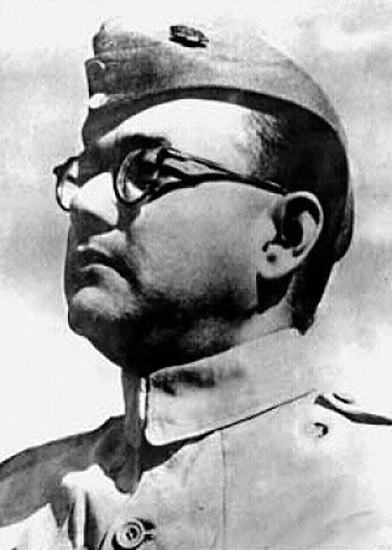 The Azad Hind or Government of Free India was a provisional government established at the initiative of Subhash Chandra Bose in October 1943 in the Japanese conquered Singapore during the 2nd World War. It was the outcome of the efforts made by many Indian nationalists and revolutionaries operating outside the Indian soil in an endeavour to liberate India from the British colonizers by allying with the Axis powers, Japan and Germany. Subhash Chandra Bose was the chosen Head of the State and the leader of the government which proclaimed its authority over the Indian civilian and military personnel in Southeast Asian British colonial territory as well as prospective Indian territories likely to be captured during the joint thrust towards India by Indian National Army in collaboration with the Japanese forces. The government of Azad Hind had issued its own currency, court and civil code, and its army had a significant contribution in the independence struggle against the British rule. Japan had also given a considerable authority to the Azad Hind government of the Japanese occupied Andaman and Nicobar Islands in 1943. Netaji Subhash is known to have hoisted the Indian Tricolour on Ross-Island (now Netaji Island) during his visit to Port Blair on 29 December 1943.
The Azad Hind or Government of Free India was a provisional government established at the initiative of Subhash Chandra Bose in October 1943 in the Japanese conquered Singapore during the 2nd World War. It was the outcome of the efforts made by many Indian nationalists and revolutionaries operating outside the Indian soil in an endeavour to liberate India from the British colonizers by allying with the Axis powers, Japan and Germany. Subhash Chandra Bose was the chosen Head of the State and the leader of the government which proclaimed its authority over the Indian civilian and military personnel in Southeast Asian British colonial territory as well as prospective Indian territories likely to be captured during the joint thrust towards India by Indian National Army in collaboration with the Japanese forces. The government of Azad Hind had issued its own currency, court and civil code, and its army had a significant contribution in the independence struggle against the British rule. Japan had also given a considerable authority to the Azad Hind government of the Japanese occupied Andaman and Nicobar Islands in 1943. Netaji Subhash is known to have hoisted the Indian Tricolour on Ross-Island (now Netaji Island) during his visit to Port Blair on 29 December 1943.
As the Head of the Cabinet of Provisional Government, Subhash Chandra Bose held the portfolio of the Prime Minister and the Minister for War and Foreign Affairs. Other important members were Captain (Doctor) Lakshmi Swaminathan (later Lakshmi Sahgal) as the Minister in-Charge of Women's Organization which was over and above her command of the Rani Jhansi Regiment of INA; Lt Col AC Chatterjee as the Minister of Finance; and Mr SA Ayer as the Minister of Broadcasting and Publicity. The Indian National Army too had several ministers with prominent names like Lt Col NS Bhagat, Lt Col J K Bhonsle, Lt Col Aziz Ahmed, Lt Col Gulzara Singh, Lt Col MZ Kiani, Lt Col AD Loganathan, Lt Col Shahnawaz Khan, and so on. Azad Hind was recognised as a legitimate state with formal diplomatic relations by a group of countries mainly belonging to the Axis Powers and their allies. These countries were Germany, Japan, Italy, Croatia Thailand, Burma, Manchukuo, Philippine, and the Wang Jingwei regime (then a puppet state of Japan in eastern China). Apart from the Andaman Islands, the provisional government of Azad Hind also exercised authority over the Indian enclaves in the Japanese occupied territories.
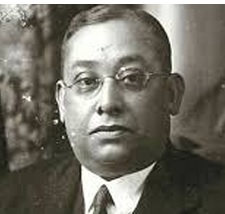 Rash Behari Bose was an aging Indian nationalist and expatriate living in Japan, who became instrumental in constituting the Indian Independence League in 1942 in Tokyo and envisioned an independence army to be used to forcibly drive away the British colonizers from the Indian soil. Next, he had a conference in Bangkok, wherein he invited Subhas Chandra Bose who was living in Germany at that time. Consequently, the German authorities helped Bose in collaboration with the Japanese to travel in a submarine to Japan. On his arrival to Singapore, the aging Rash Bihari Bose transferred leadership to Netaji Subhash who formally established the aforesaid government and a formal declaration: "It will be the task of the Provisional Government to launch and conduct the struggle that will bring about the expulsion of the British and their allies from the soil of India." Taking the command of the then rather undermanned and unprofessional Indian National Army from Mohan Singh, he transformed it to a professional army with requisite training and equipment with the assistance from the Japanese government. He augmented it through the recruitment of the Indian civilians living in the South-east Asian territories under the Japanese control as also many Indian POWs (prisoners of war) from the British forces in Singapore, Malaya and Hong Kong.
Rash Behari Bose was an aging Indian nationalist and expatriate living in Japan, who became instrumental in constituting the Indian Independence League in 1942 in Tokyo and envisioned an independence army to be used to forcibly drive away the British colonizers from the Indian soil. Next, he had a conference in Bangkok, wherein he invited Subhas Chandra Bose who was living in Germany at that time. Consequently, the German authorities helped Bose in collaboration with the Japanese to travel in a submarine to Japan. On his arrival to Singapore, the aging Rash Bihari Bose transferred leadership to Netaji Subhash who formally established the aforesaid government and a formal declaration: "It will be the task of the Provisional Government to launch and conduct the struggle that will bring about the expulsion of the British and their allies from the soil of India." Taking the command of the then rather undermanned and unprofessional Indian National Army from Mohan Singh, he transformed it to a professional army with requisite training and equipment with the assistance from the Japanese government. He augmented it through the recruitment of the Indian civilians living in the South-east Asian territories under the Japanese control as also many Indian POWs (prisoners of war) from the British forces in Singapore, Malaya and Hong Kong.
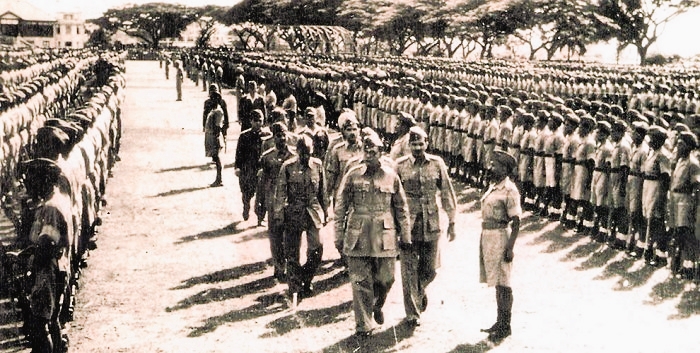
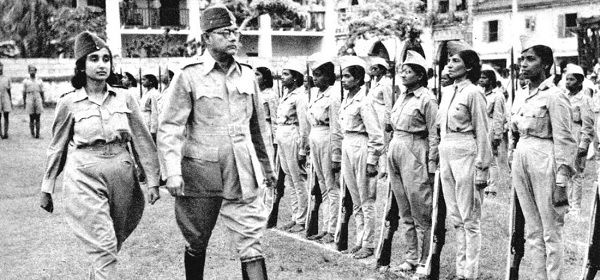
Following the formation of the provisional government, Netaji Subhash declared a war against the British (called Allied Forces) on the Indo-Burma Front with the Indian National Army into action in the Imphal-Kohima sector. The INA was able to breach the British defences in Kohima, capturing the Moirang, thereby a direct threat to the British positions both in Silchar and Kohima. According to reports, the INA columns led by Col Gulzara Singh had penetrated over 200 miles into the Indian territory before reversal with their fateful losses against the combined might of Allied forces comprising of strong ground resistance, sustained air attacks and compromised supply lines. Similarly, the control of the Andaman and Nicobar Islands too was lost when the combined garrison of the INA and Japanese were overwhelmed by the larger British forces and Islands retaken by them. The defeat of the Axis Powers had already started at the hands of the combined Allied forces in various parts and Rangoon was left to be defended by the INA without the Japanese help. While Netaji Subhash, other senior INA officers and a small contingent of INA soldiers and Rani of Jhansi regiment left Rangoon in April 1945 to Singapore to continue struggle but the strength of INA effectively reduced after the Allied forces captured Rangoon in May 1945 and the left-over troops surrendered.
According to reports, the main reasons of the INA setback in Rangoon were endemic diseases and inadequate food and equipment supplies. Besides, the news of continuous defeat of the Axis powers in other parts was also a demoralising factor. With the rising nationalism and resentment among the British Indian armed forces, Bose had expected a large scale defections of soldiers that did not materialize. Later his mysterious disappearance or death in August 1945 completely sealed the fate of the INA. Many INA troops and officers were taken as POWs, brought to India and tried for treason. The public resentment and overwhelming support for the defence of these personnel from the prosecution by the British became a central point of contention between the British Raj and Indian Freedom Movement at that time. However, Netaji Subhash and the INA succeeded in raising the tide of the aggressive nationalism not only in the minds of common Indian masses but also inspired the British Indian armed forces which had several hartals and mutinies to overthrow the British Raj. The extent to which the INA's activities affected the decision of the British to leave India was later reflected in the views of the British Prime Minister Clement Attlee.
Royal Indian Naval Mutiny
The Royal Indian Navy mutiny or the Naval Uprisings of 1946 is considered an insurrection of the Indian naval ratings which even consolidated the soldiers, police personnel and civilians against the British government in India. Bombay (now Mumbai) was the initial flash point of the resentment and revolt which spread throughout the British India with electric speed with major trouble points being Calcutta (now Kolkata), Karachi, Andaman Island, Madras (now Chennai), Kathiawar, Punjab and Vishakhapatnam (Vizag). According to an estimate, the uprisings involved about 78 ships and shore establishments with an estimated 20,000 naval ratings. The mutiny was, however, quickly suppressed with the deployment of the Royal Navy warships and massive British troops. The leaders of the Indian National Congress and Muslim League are known to have opposed mutiny, but the Communist party of India allegedly favoured it. Apart from this episode, the Royal Indian Navy had also experienced as many as nine mutinies on individual ships between1943 to 1945 too.

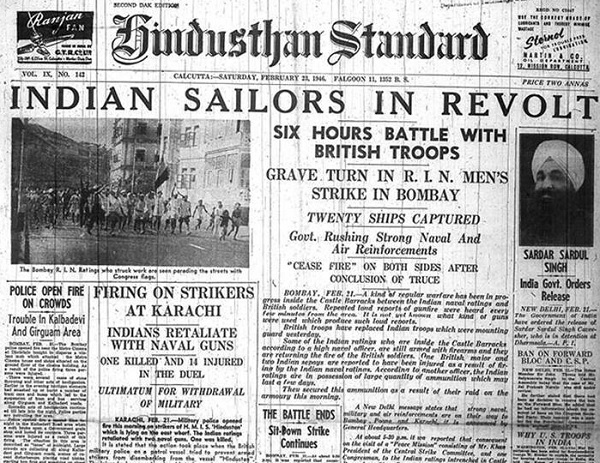
This started with the HMIS Talwar which was a shore establishment at Colaba, Bombay. According to the reports available, an ad hoc Naval Central Strike Committee was formed, and protests started at Bombay on 18 February 1946 by the ratings citing the living conditions, food and other general conditions of the service. But there are credible accounts and evidence too that the stories of Subhash Chandra Bose, INA siege of Burma and Imphal and the repressive measures taken by the British Raj were other potent causes of discontent among the naval establishments.
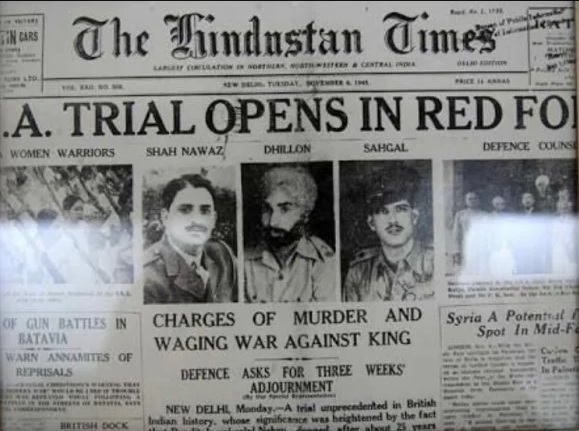
After the 2nd World War, the public trial of the INA POWs including officers such as Shah Nawaz Khan, Prem Sahgal and Gurbaksh Singh Dhillon for sedition at the Red Fort too invited wide attention and resentment in public as well as defence establishments. The rebellious action of the Indian ratings received wide support from the common masses which observed one day strike in Bombay. The news spread fast in other cities and defence establishments with some units of the Royal Indian Air Force and police forces were also reported to have gone for agitation.
The protests involved the Indian Naval personnel in calling themselves the "Indian National Navy" offering left-handed salutes to the British officers apart from resorting to disobeying their order and refusing food and parade. The British flags and naval insignias were removed, and ratings hoisted three flags together belonging to the INC, Muslim League and Communist Party in an endeavour to show unity and harmony on communal and ideological ground. At several places, the slogans such as "Quit India" and "Jai Hind" was displayed by the mutineers in defiance of the British authorities. The Central Committee of mutineers also sent a Charter of Demands to their authorities which was comprised of many political and service-related demands. The chief demands included the release of all Indian political prisoners, unconditional release of all detained INA personnel, withdrawal of the Indian troops/ personnel from foreign locations, prosecution of the Commanding and other officers for mistreating crews in ships, unconditional release of the detained naval ratings, fast demobilization, equality in status with the Royal Navy in pay, allowances and other facilities, improvement in the quality of food in offshore establishment and ships, improved standard of treatment of ratings by the officers, and so on.
The naval personnel from other ships such as the HMIS Sutlej, HMIS Jumna, as also at the Castle and Fort Barracks in the Bombay Harbour joined mutiny by 19 February 1946 in solidarity with the HMIS Talwar, the actual flash point. By 20 February 1946, almost all ships and naval establishments were seized by mutineers encompassing about 45 warships and a dozen shore establishments, several auxiliary vessels and flotillas by approximately 10,000 naval ratings. As already mentioned, similar upheavals also took place almost simultaneously in places like Calcutta, Karachi, Madras, Vishakhapatnam, Andaman and Nicobar Islands, etc. On the part of the British Raj, the British Vice Admiral John Henry Godfrey issued a statement on the All India Radio asking mutineers to surrender forthwith or face a complete destruction. The British Naval reinforcements were quickly called from Singapore, bombers of the Royal air Force flown to Bombay, and the Royal artillery and several British Army battalions were promptly inducted from nearby establishments. In the ensuing violence, the official estimates of causalities included over two hundred people killed and thousands injured. Sardar Vallabhbhai Patel and MS Khan held a meeting with the representatives of the Central Committee of mutineers, following which Patel issued an appeal calling for the end of rebellious action. After the mutineers gave in, several arrests were made followed by large scale court martial leading to the dismissal of about 476 sailors. Remarkably, none of the dismissed personnel were reinstated in the Indian Navy after independence by the Congress government. However, the British Prime Minister Clement Attlee immediately announced the Cabinet Mission to India following this mutiny, which arrived in New Delhi on 24 March 1946 to discuss the transfer of power from the British government to the Indian political leadership, with the aim of expediting the independence of India.
Other Rebellions
While the resentment and upsurge among the sailors was more widespread and pronounced, similar sentiments were also brewing in other armed forces and police personnel against the British Raj in general owing to national sentiments and own superior officers in particular due to their maltreatment and poor service conditions. For instance, in Madras and Poona (now Pune) several British garrisons faced unrest within the lower ranks of the Indian soldiers. Instances of the NCOs (non-commissioned officers) refusing the orders of the British superiors were also reported at some places. In February 1946, mutinies were reported in the Indian Pioneers unit in Calcutta as also at the Signal Training Centre in Jubbulpore (now Jabalpur). It is well documented that the dissatisfaction and resentment against British colonial rule was rapidly growing within the military, police force and bureaucracy in 1940s.
A series of demonstrations and strikes had earlier occurred at many Royal Air Force stations in January 1946. This involved refusals to obey orders of superior British officers in protest against the poor service conditions and slow demobilization after the 2nd World War. However, all such protests are also believed to have an element of nationalism in minds of soldiers due to the growing independence movement. The air Force protests were started at Karachi and spread over nearly 60 air force units/bases at different locations involving about 50,000 airmen. The then Viceroy of India, Lord Wavell, is known to have commented at the naval uprisings, "I am afraid that (the) example of the Royal Air Force, who got away with what was really a mutiny, has some responsibility for the present situation.” The majority Indian historians look at these protests and uprisings as the rebellious mood against the colonial rule; notwithstanding contemporary denials, even the discreet British intelligence reports increasingly admitted that the Indian Army, Navy and Air Force units were no longer trustworthy having reached a point of no return.
Revolutionary Movement
The Indian revolutionaries too played an important role in the Independence movement although their role and contributions have always been underestimated by the successive post-independence governments perhaps out of fear in justifying their violent actions. Although there were some efforts to synchronize and coordinate various movements, but the revolutionary activities remained more or less sporadic undertaken by different factions at different points of time in different parts of the country during the British Raj despite the common goal being forceful eviction of the British colonizers from the country. The Indian revolutionary groups primarily operated in Bengal, Maharashtra, Bihar, the United Province (Uttar Pradesh) and Punjab, with occasional occurrences reported across other parts of India too. Although the British government treated them as terrorists and inflicted death punishment through hanging in majority cases if captured alive, they deserve to be rightly treated as revolutionaries in true sense because they were motivated and driven by the patriotic and nationalist sentiments, and sacrificed their lives for the noble cause.
Unlike the present-day terrorists and militants of mercenary attitude, cruel methods and lack of any sense of morality and ethics, most Indian revolutionaries were morally strong and truthful, and avoided any intentional harm to any innocent civilians, including the families of the British officers responsible for gory acts. The chief difference between the Congress leaders and revolutionaries associated with the independence movement remained that the former adopted the peaceful disobedience and other non-violent means while the latter believed in armed revolution against the British rulers though objective being common in both cases. Although events of stray armed rebellion against the British took place earlier too but the revolutionary movement got true shape and momentum around the partition of Bengal in 1905. The Anushilan Samiti, Jugantar Party (an offshoot of the former), Hindustan Republican Association (HRA), Abhinav Bharat Society, Kotwal Dasta, India House and Gadar Party are some of the important revolutionary organizations of the time which operated from India and abroad against the British Raj.
The Anushilan Samiti arose in Bengal in 1902 with its two prominent and largely independent arms in East and West Bengal: Anushilan Samiti centred in Dhaka (now in Bangladesh) under Pulin Bihari Das and the Jugantar group (centred at Calcutta) with Arvindo Ghosh as leader. The HRA was established in 1924 at Kanpur with Ram Prasad Bismil, Chandrashekhar Azad and others as leaders. Abhinav Bharat Society was created by Vinayak Damodar Savarkar and his brother Ganesh Damodar Savarkar in 1904 in Nasik (Maharashtra). The aforesaid groups and many others constantly indulged in underground revolutionary activities against the British Raj which was not endorsed but so often criticized by Mahatma Gandhi and other Congress leaders, who believed only in peaceful means. Many revolutionaries were arrested and hanged after summary trials, others were deported for life to the ill-famous Cellular Jail in Andaman while considerable numbers were killed in action or resorted to suicide to escape arrest, and subsequent harassment and torture.
After independence, the Jawaharlal Nehru led Congress government consciously avoided publicly acknowledging the contribution of the revolutionaries in the freedom struggle or ever bestowing the honour and recognition they deserved. The successive Indian government too had by and large similar approach and attitude; consequently, most of the revolutionaries and their saga remained unrecognized and their role and contributions was largely forgotten. Now the present Narendra Modi government has boldly resolved to rediscover these unsung heroes, recognize their contribution in freedom struggle and restore their place in the annals of history as due. Following is an illustrative list of some noted revolutionaries:
Khudiram Bose (1888-1908); Kanailal Dutta (1888-1908); Satyendranath Bose (1882-1908); Chandra Shekhar Azad (1906-1932); Ram Prasad Bismil (1897-1927); Bhagat Singh (1907-31); Udham singh (1999-1940); Vanchinathan (1886-1911); Hemu Kalani (1923-43); Ashfaqulla Khan (1900-27); Anant Laxman Kanhere (1892-1910); Krishnaji Gopal Karve (1887-1910); Bagha Jatin (1879-1915); Ganesh Damodar Savarkar (1899-1945); Vinayak Damodar Savarkar (1883-1966); Batukeshwar Dutt (1910-1965); Sukhdev Thaper (1907-31); Shivaram Hari Rajguru (1908-31); Roshan singh (1892-1927); Pritilata Waddedar (1911-32); Jatindra Nath Das (1904-29); Bhagwati Charan Vohra (1903-30); Madan Lal Dhingra (1883-1909); Alluri Sitarama Raju (1897-1924); Kushal Konwar (1905-43); Surya Sen (1894-1934); Sri Aurobindo Ghosh (18872-1950); Rash Bihari Bose (1886-1945); Baikuntha Shukla (1907-34); Badal Gupta (1912-30); Binoy Basu (1908-30); Rajendra Lahiri (1901-27); Prafulla Chaki (1888-08); Veer Bhai Kotwal (1912-43); Basanta Kumar Biswas (1895-1915). The aforesaid list comprises of only those revolutionaries who had sacrificed their lives fighting for the cause or had undergone harsh punishments such as Kala Pani in Andaman Cellular Jail.
The Congress as Successor of British Raj
From the aforesaid brief description, it is established that the resentment and rebellious feelings against the foreign rulers was not only deep rooted but also widespread by 1940s so much so that people were eager to expel the British colonizers from the Indian soil by employing every possible means. Apart from what the Congress was doing to achieve independence, the widespread revolutionary activities, Netaji Subhash’s INA, Naval mutiny, sporadic events of uprisings in the British Indian Air Force, Army and Police force, and civilian strikes only vindicate this position and mood of Indian people to get riddance of slavery. Even the peace apostle Gandhiji had understood this reality and perhaps the reason why he ultimately opted for the Quit India Movement with his ”Do or Die” call. Although the British rulers had suppressed the movement with severe application of force, but the nature of damages itself speak of the nature of movement and the level of popular uprisings. According to British historian John F. Riddick, about 550 post offices, 250 railway stations, 70 police stations, several rail lines, large number of telegraph lines and at least 85 government buildings were either completely destroyed or partly damaged; at several places in Maharashtra, Bengal and United province, people had formed parallel local governments. The British Government had to deploy 57 battalions of British troops to suppress uprisings in which over one hundred thousand arrests were made, hundreds of civilians killed, mass fines were levied, and demonstrators were subjected to public flogging.
Towards the later decades of the British Raj, three prominent political parties namely the Congress led by MK Gandhi, Muslim League under MA Jinnah and the Communist Party of India were on the political forefront at the national level. Among them, the Congress as chief anchor had mass following among the Hindus and other minority communities sans Muslims, The Muslim League had overwhelming support of Muslim population fostering the communal agenda of separate independent state for them, and the Communists with a much smaller base were ambivalent in their aspirations and actions. In fact, this position of the communist parties has not changed even after seven decades of independence with most of them still seeking ideological inspiration and solace either from Communist China or Russia. Accordingly, the Congress was left as the only organized and obvious political entity with Pan India presence and following for the British rulers to choose for the transfer of power. The British had additional reason in favour of the party that the key leaders of Congress like Gandhi and Nehru had by and large always cooperated with them and believed in peaceful means to achieve independence even at the cost of indefinite delays. In other words, the Congress was the only eligible political party left to lead India post-independence with the Muslim League parting ways with the newly created Islamic nation.
After independence, the Prime Minister designate Jawaharlal Nehru’s speech in English towards the midnight of 14 August 1947 refers to his landmark oration of “tryst with destiny” made in the context of the triumph of Indian independence movement against the colonial rule but in the long run the phrase turned out to be his personal triumph over the Congress with insinuation of own dynastic rule in India. His anglicized manners and peculiar secular belief as reflected in his famous remark “I’m English by education, a Muslim by culture, and Hindu by accident” proved to be good for shining his personal image but rather futile and counter-productive for an all-inclusive long-term progress and welfare of the nation, compromising the interests of the majority Hindu community in many ways. In fact, the current nemesis of the Congress despite their claiming the legacy of the freedom movement is the culmination of summarily inappropriate and wrong decisions taken at least on two crucial stages in 1939 and 1946, both involving the election of the Congress president with Gandhi as patron and key inspiration behind the party.
1. Mahatma Gandhi versus Netaji Subhash (1939)
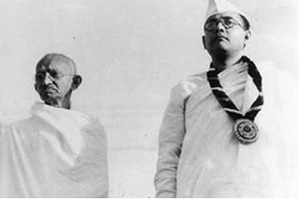 By late 1930s, Mahatma Gandhi was already completed nearly 70 years of age, his mantra of peaceful non-cooperation and satyagraha neither worked well with British nor with the Muslim League yet he did not revise his approach to inculcate new ideas and energy to galvanize the Congress efforts for independence. He was often seen as a reluctant leader in self-denial mode. For instance, when Gandhi was released from prison in January 1924 after about two years of detention, he avoided politics nearly for five years. Similarly, after he was arrested in 1932 on sedition charges, he again remained nearly in seclusion for almost five years (1934-38) after release. On the other hand, Subhash Chandra Bose had emerged as mature, intelligent and charismatic leader to provide lead to Congress with fresh ideas and vigour. The aforesaid averment is vindicated with the popular support he had within the Congress and was elected President in 1938 annual elections.
By late 1930s, Mahatma Gandhi was already completed nearly 70 years of age, his mantra of peaceful non-cooperation and satyagraha neither worked well with British nor with the Muslim League yet he did not revise his approach to inculcate new ideas and energy to galvanize the Congress efforts for independence. He was often seen as a reluctant leader in self-denial mode. For instance, when Gandhi was released from prison in January 1924 after about two years of detention, he avoided politics nearly for five years. Similarly, after he was arrested in 1932 on sedition charges, he again remained nearly in seclusion for almost five years (1934-38) after release. On the other hand, Subhash Chandra Bose had emerged as mature, intelligent and charismatic leader to provide lead to Congress with fresh ideas and vigour. The aforesaid averment is vindicated with the popular support he had within the Congress and was elected President in 1938 annual elections.
In 1939, Subhash Chandra Bose opted for the re-election, but Gandhi didn’t want him again due to ideological differences. Reportedly, Nehru was on a long holiday in Europe; on his return Gandhi asked him to announce his candidature for the post but Nehru was not inclined so he suggested Maulana Azad’s name, but the latter too was not keen for the contest. Finally, Pattabhi Sitaramayya was persuaded to put up the fight against Bose but despite Gandhi’s weight he could not match Bose’s popularity and heavily lost it in the Congress Tripuri Session 1939. But the defeat was taken by Gandhi as a personal loss, as he remarked -
“… I am glad of his (Bose) victory… and since I was instrumental in inducing Dr Pattabhi not to withdraw his name after Maulana Azad Sahib done so, the defeat is more mine than his… In his (Bose) opinion, his is the most forward and boldest policy and programme…the minority can only wish him all the best.”
It was Gandhiji’s characteristic way of declaring a war against Bose. The latter had won presidential post, but the Congress Working Committee was still controlled by Gandhi’s followers. Needless to mention, the level of distrust and division between Subhash and Gandhi and his followers was such that Subhash had to resign from the Congress and follow his own path in the same year. Although post-independence history of India has been very kind to Gandhiji for the obvious reason but the fact is that it was not just Netaji Subhash but a whole lot of people like Aurobindo Ghosh, Dr BR Ambedkar, KM Munshi and Annie Besant, leave aside MA Jinnah, had serious ideological differences and issues with him and his ways. A tragic yet true part of the Congress history is that nearing independence, he was increasing got side-lined by the very politicians and powerbrokers of the INC who were close to him and negotiated the terms of India’s freedom.
2. Jawaharlal Nehru versus Sardar Vallabhbhai Patel (1946)
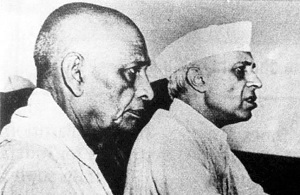 In early 1946, the British came out with the Cabinet Mission Plan for the transfer of power to an interim Indian government. After a hiatus of almost six years, the election of the Congress president was due, the post had become crucial because it was fairly certain that the party president would be invited to form the interim government at independence. Despite Gandhi’s support in favour of Jawaharlal Nehru perhaps due to his educational (English) background and liberal ideology, the majority members in Congress favoured Sardar Vallabhbhai Patel as the Congress president (and also an obvious choice as the first Prime Minister of free India) because of his seniority, administrative skills, organizing ability and effective leadership. Despite Gandhi’s choice known to the majority Congress men across the country, the 12 out of 15 Provincial Congress Committees, which were also the only legitimate bodies to nominate and elect the Party President, had nominated Sardar Patel and none of the others supported Jawaharlal Nehru. Notwithstanding the aforesaid position, Gandhiji managed to persuade Sardar Patel to withdraw in favour of Jawaharlal Nehru.
In early 1946, the British came out with the Cabinet Mission Plan for the transfer of power to an interim Indian government. After a hiatus of almost six years, the election of the Congress president was due, the post had become crucial because it was fairly certain that the party president would be invited to form the interim government at independence. Despite Gandhi’s support in favour of Jawaharlal Nehru perhaps due to his educational (English) background and liberal ideology, the majority members in Congress favoured Sardar Vallabhbhai Patel as the Congress president (and also an obvious choice as the first Prime Minister of free India) because of his seniority, administrative skills, organizing ability and effective leadership. Despite Gandhi’s choice known to the majority Congress men across the country, the 12 out of 15 Provincial Congress Committees, which were also the only legitimate bodies to nominate and elect the Party President, had nominated Sardar Patel and none of the others supported Jawaharlal Nehru. Notwithstanding the aforesaid position, Gandhiji managed to persuade Sardar Patel to withdraw in favour of Jawaharlal Nehru.
Of course, the available accounts suggest that Gandhi indeed gave a hint to Jawaharlal that none of the provincial committees had favoured his candidature except a few CWC members, to which he (Nehru) maintained a stoic and embarrassing silence. The writings on wall was clear that Nehru was not willing to accept second place (subordinate) to any Congress leader. Thus, Gandhi sacrificed his most trusted and faithful colleague in favour of the glamorous and westernised Nehru. These facts have also been reported by Abul Kalam Azad in his book “India wins Freedom”, wherein he has admitted his mistake of not supporting Sardar Patel at the crucial juncture. The skill and acumen of Sardar Patel could also be understood from the fact that after independence, as Home Minister, he was tasked with the integration of over 560 small and big princely states, including reluctant Hyderabad, Junagarh and Jodhpur, and he meticulously achieved it with no comebacks. On the other hand, Jawaharlal Nehru, as Prime Minister, decided to himself handle the integration of Jammu & Kashmir and the Nasoor (cancer) thus created is still bleeding on the nation. The illustrations in the aforesaid paragraphs clearly suggest how the personal preferences and ambitions could make a mighty nation to suffer with irreversible consequences.
Jawaharlal Nehru is lauded by many historians, political analysts and intellectuals as true secularist, humanist and statesman yet under his premiership, the Personal Laws of only Hindu community were framed, and Hindu Code bill passed by the Parliament while he avoided taking similar action for the Muslim community more so when the Constitution provided for a uniform civil code; as if only Hindus needed reforms and Muslims didn’t. Under his regime, the legislation was brought for the administration and acquiring the immovable properties of the Hindu temples and Mutts but similar action was avoided for the religious places of minority communities. He was also instrumental in Haj subsidy for the minority community. He often criticised Hindu rituals and traditions citing it as superstitions of a backward community, but he didn’t consider necessary to raise his voice against the social evil of the Muslim community such as the multiple marriage, triple talaq, practice of Halala and radicalisation of education in Madrassas. And all this happened when the country had been divided to create an independent Islamic country as dedicated home for the Muslim community. All along, it has been like putting the majority community on trial and predicating the Indian secularism on certification by the minorities, particularly Muslims and Christians.
Conclusion
In the aforesaid background, it would be a gross mistake on the part of any political party or person to discredit or undermine the Indian National Congress for their efforts in the independence movement. At the same time, the Congress that claims the legacy of the INC on date is also not justified. Quite a few other political parties created later are also the product of the original Congress either due to ideological differences or personal ambitions of people after independence. For instance, Bhartiya Jansangh (now Bhartiya Janta Party) was created by Syama Prasad Mukherjee, a congress member and the Minister for Industry and Supply in Nehru government after independence. He had parted ways from the Congress not due to ideological differences with the party but due to personal differences with Jawaharlal Nehru’s way of working. Under Jawaharlal Nehru’s leadership, the Congress accepted Louis Mountbatten as the first Governor-General of India until June 1948 while Jinnah led Muslim League refused such courtesy to British after independence. Besides, rather than acknowledging the contribution and sacrifices made by many martyrs and unsung heroes of the freedom struggle, the Nehru government chose to distance themselves for the reasons best known to them. The successive Congress governments too continued to ignore their contribution sticking to the same Nehruvian policy.
It is beyond doubt that apart from the INC's efforts, Subhash Chandra Bose’s Azad Hind Fauj, Naval Mutiny of February 1946, revolutionary activities and growing resentment among the Indian masses against the British Raj had significant impact on British rulers’ decision to leave India. This could also be understood from the fact that the original Cabinet Mission Plan had envisioned the grant of independence by June 1948 but the Clement Atlee government instead decided to prepone it to August 1947 itself. There are many illustrated accounts as also admission by the then British Prime Minister himself about the impact of INA on the British minds as also that they had completely lost their faith in the trustworthiness of the Indian armed forces and police. Rightly so then that the Narendra Modi government has endeavoured to rectify this serious mistake by recognising and honouring the contribution of the iconic leaders like Subhash Chandra Bose, Vallabhbhai Patel and a plethora of other unsung and forgotten heroes of the freedom struggle. Whoever are claiming the legacy of the erstwhile INC still have a chance to join hands in this noble deed rather than distancing and finding faults with the process. Of course, some other contributory factors may have been the simultaneous weakening and collapse of the colonialism world over, heavy losses of British empire in the 2nd World War, global recession, American pressure and own ideology of the Labour Party of Britain in power.
30-Jan-2022
More by : Dr. Jaipal Singh